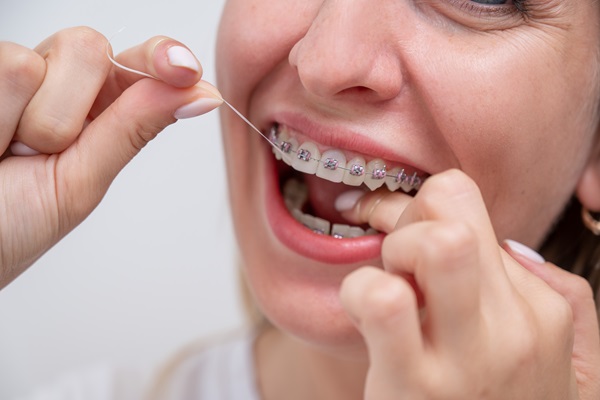A Family Dentist Discusses How to Clean Braces

If you have recently gotten braces from the family dentist, you will probably be aware of the hassles of cleaning them. The braces’ brackets are bonded to the tooth’s surface, limiting the reach of the toothbrush and making it harder to clean the teeth thoroughly. Nevertheless, you still need to keep the braces as it is part of keeping the mouth clean.
How to clean braces
The following are helpful tips to keep braces clean:
Select the correct toothbrush
The toothbrush in use before the attachment of braces will probably not be good enough for proper cleaning. Although a regular toothbrush can function, patients might need to consider other options that will make cleaning the teeth and the braces more convenient. For instance, an electric toothbrush might work. Patients can also check for brushes designed mainly to clean around braces. Spindle brushes can clean food debris from between the teeth and braces.
Brush and floss correctly
With braces, patients need to dedicate more time for cleaning. It is important to pay attention to the areas where food can get trapped easily. Brushing should take about three to five minutes with fluoride toothpaste and cover the chewing surfaces, the tongue, and every side of the teeth. An oral rinse can also aid the process.
Flossing might be somewhat challenging due to the wires running along the teeth. However, it is crucial when wearing braces. It might take some time, but the effort is worth it. A floss threader, floss picks and water flosser are good options for removing food particles and plaque between the teeth.
Use a mouthwash
Using mouthwash is essential, especially when the braces are still new. It will take some time for the mouth to adjust to having brackets and wires, and these are more prone to collecting food particles and bacterial plaque than other parts of the mouth, which could mean bad breath and poor oral health. An antibacterial mouthwash can disinfect the mouth down to the areas under the braces where brushes cannot reach, eliminating any leftover bacteria that might remain in the oral cavity. It also prevents the problem of bad breath. It might help also to use a mouthwash that contains fluoride.
Clean the toothbrush and replace it regularly
It is advisable to rinse the toothbrush properly before and after brushing. If there are food particles on the bristles, they might be transferred back to the mouth, encouraging bacteria presence and making cleaning the mouth more difficult. It is also important to replace the toothbrush every three months since it will wear out a lot faster than usual.
In conclusion
Getting braces is just the first step in the teeth straightening process. Ensure you follow the recommendations from the family dentist to ensure treatment progresses successfully. It is easy to follow a proper oral health routine for a few days before slacking. Remember that now, more than ever, caring for your oral cavity and braces is important.
Request an appointment here: https://greatsmilesdental.com or call Great Smiles Dental at (209) 222-3636 for an appointment in our Modesto office.
Check out what others are saying about our dental services on Yelp: Family Dentist in Modesto, CA.
Related Posts
Wondering when you should see an emergency dentist? Read on to learn more. Regular dental care can prevent emergency dental treatment. Unfortunately, dental emergencies do happen unexpectedly, even if you brush and floss regularly. In such cases, it is a great idea to visit an emergency dentist immediately.Many people do not know whether their dental…
There are risks associated with sedation dentistry, although most patients do not have any adverse effects. However, learning about the potential drawbacks to sedation dentistry, as well as the benefits, can help you decide if sedation dentistry is appropriate and safe for you to utilize. The most notable risks of sedation dentistry include an allergic reaction,…
A deep teeth cleaning is a specialized dental procedure that addresses plaque and tartar buildup below the gumline, often becoming necessary when gums show signs of inflammation or infection. This thorough approach extends beyond the scope of regular cleaning to prevent or slow the progression of periodontal disease. Recognizing the indicators that point to a…
Smoking after receiving All-on-4 dental implants can severely compromise healing, reduce implant success rates, and increase the risk of long-term complications. All-on-4 treatment relies on the secure integration of dental implants into the jawbone, a process known as osseointegration. Smoking disrupts this process by impairing circulation, reducing oxygen delivery, and slowing tissue regeneration, which can…
